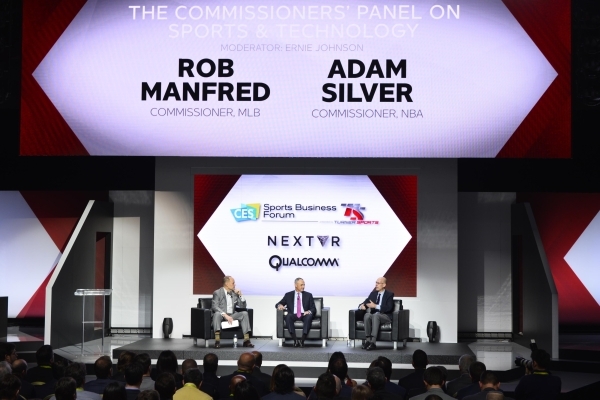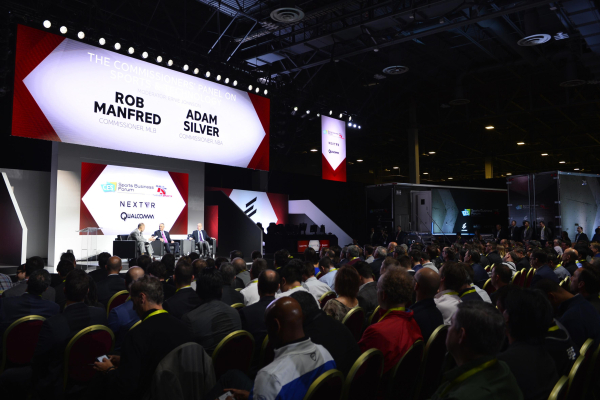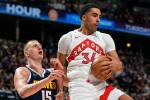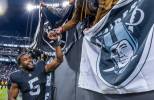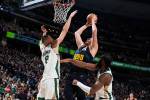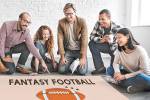NBA, MLB commissioners still believe in fan experiences amid tech world
If you believe Turner Sports president David Levy, there are more than 4 billion screens in the world.
That's 4 billion potential customers to watch a sporting event live.
If you're NBA commissioner Adam Silver or Major League Baseball commissioner Rob Manfred, you're thinking, "Wow, what a great opportunity for us to expand our brand!"
On Thursday at The Venetian, two of sports' most powerful figures spent 40 minutes agreeing that technology is something their leagues need to continue to embrace. At the same time, they emphasized the need to ensure an in-person experience isn't compromised at the expense of streaming a game on a tablet.
"Going to major league sporting events are like modern town halls," Silver said at the CES Sports Business Forum. "People crave being around other people."
Silver, who will begin his second season as commissioner next month, pointed out that season-ticket sales and overall attendance at NBA games have increased over each of the past four years.
Manfred said going to the ballpark is generational, and that a kid who goes with his dad to his first major league baseball game will remember that experience for a lifetime.
"We sell 75 million tickets in major league baseball every year," said the second-year commissioner. "We sell another 41 million to 42 million for minor league baseball. There's something about being at the game that has a social aspect to it that will continue."
Neither commissioner mentioned that it is expensive to attend an NBA game and tough to afford a decent seat at an MLB game. Nor did they mention the high cost of food and beverages as well as parking, or the security concerns with attending such an event instead of watching in high definition on a flat-screen TV.
According to teammarketing.com, which annually calculates the cost of attending sporting events, it cost a family of four an average of $211.68 to attend a major league baseball game in 2015 and an average of $333.58 for an NBA game in 2014-15.
But even for those who attend sports events in person, technology is part of the experience. From the time they park their car to going through the turnstile to ordering food and souvenirs to interacting with other fans and the athletes, an on-site experience is very much interactive. Your cellphone has become your entryway into your night at the game.
"They're not arenas anymore," Silver said of the NBA's 30 teams' home courts. "They've become high-tech studios with enhanced sights and sounds."
To that end, both commissioners have concerns that because of the proximity fans have to players that there is a danger for something inappropriate that gets said or done and leads the league to apply disciplinary measures.
"These are very different times," Manfred said. "Fans have never been closer to the game than they are now."
Silver said: "We have to be incredibly careful. Anything you say can get picked up. I've told our players they need to be more aware and cautious as to what they say and do."
Nowhere has that been more critical than in social media, the primary vehicle in which fans can interact with their heroes. Whether it's on Twitter, Instagram, Facebook or any number of platforms, both leagues have concerns about players crossing the line to where it compromises the integrity of the game.
"I don't think you'll see any of our players tweeting live during a game anytime soon," Silver said. "We encourage our players to engage in social media. But we do draw the line to separate what goes on inside the four corners of the court."
In June, MLB fined Boston Red Sox third baseman Pablo Sandoval $25,000 for tweeting during a game. Other players have accessed their Facebook or Instagram accounts before the final out has been recorded.
Manfred said he's all for social media, but not at the expense of baseball's long-standing traditions.
"We are changing, and there will be continued evolution," Manfred said. "To me, the larger issues is what fans want is to not just watch the game. They have another device going, and social media is an opportunity to provide our fans with that access. The question is, where do you draw the line?"
One area that adds to the spectator experience — fantasy sports — is something the NBA and MLB continue to embrace, even though many states are looking into whether daily fantasy sports constitutes gambling and therefore illegal to conduct operations.
"We're watching it very closely," said Silver, whose league has a tie-in with FanDuel. "Our belief is if you have a vested interest in the outcome of a game, you're going to be more engaged."
Manfred, whose league has an agreement with DraftKings, said: "We've looked into it very carefully, and it is our connection that fantasy sports are a game of skill. That said, fantasy sports is a form of engagement, and it needs to have transparency and regulation."
Both daily fantasy services are banned in Nevada until they get a gaming license.
Silver said because he has so many choices to watch his league's games, it doesn't necessarily mean he reaches for the remote.
"The ability to get any game any night by clicking and get such high quality on hand-held devices is amazing," Silver said. "It seemed like it happened overnight.
"My wife makes fun of me because we've got a beautiful 70-inch Samsung TV in our apartment in New York, and I would watch a game off my tablet instead of grabbing the remote for the TV. Now, I'll reach for my phone instead of my iPad and watch."
Contact reporter Steve Carp at scarp@reviewjournal.com or 702-387-2913. Follow him on Twitter: @stevecarprj



